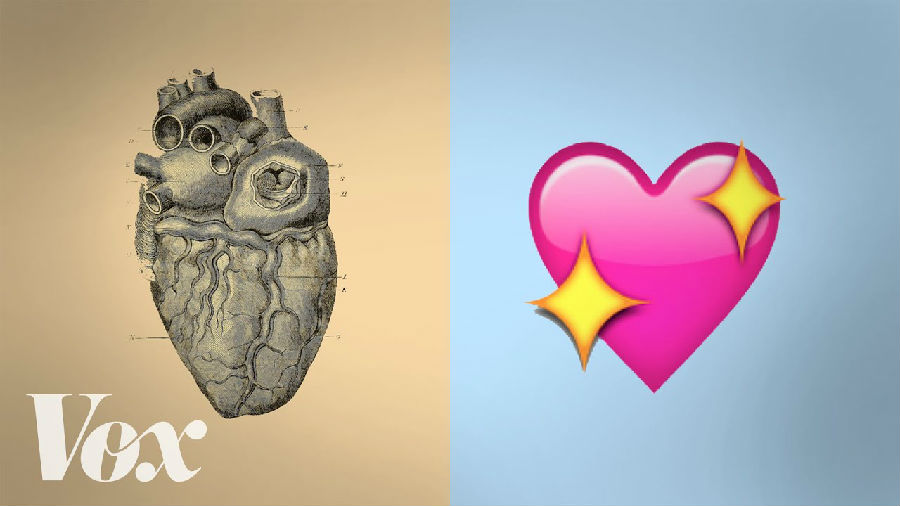原味人文風情:We use this every day as a stand-in for love and the human heart, but it doesn't really look like the real thing.
我們每天都用這個符號代表愛以及人類的心臟,但這符號和真正心臟的模樣其實有點差距。
Zachary Crockett at Priceonomics has looked into the history of this.
Priceonomics 的 Zachary Crockett 研究了愛心圖案形成的歷史。
He says that there are relics resembling the heart shape from 3,000 BC, but these shapes stood for ivy or fig leaves, not the heart.
他表示,公元前三千年留下的遺跡中有類似心型的圖案,但這些圖案是代表長春藤或無花果葉片,而非心臟。
It wasn't until several centuries later that the heart became a symbol representing "love."
直到幾世紀之后,心臟的形狀才成為代表“愛”的象征。
But the problem was they didn't really know what the heart looked like, partially because the Catholic Church prohibited autopsies.
但問題是,他們不太清楚心臟到底長什么樣子,一部分可能是因為天主教會禁止尸體解剖。
So when artists tried to draw the heart as a symbol of love, like in this French manuscript from 1250, it looked like this.
所以,藝術家試著要畫心臟圖案來代表愛的時候,就像這個公元 1250 年的法國手稿,畫起來就像這樣。
By the time detailed anatomical drawings appeared, like those of Leonardo da Vinci in the early 16th century, the simplified symbol had already taken root.
到了詳細解剖圖出現的時代,如十六世紀初達文西的作品,簡化符號的表現方式早已固定了。
It became a popular image in Catholic symbolism as well as secular things like decks of cards.
愛心成為神圣天主教符號與世俗卡牌的普及象征圖案。
Eventually, New York City's 1977 campaign turned the heart symbol into a verb...
終于,紐約市 1977 年的活動將愛心符號轉成一個動詞...
I love New York. ...replacing the word "love."
我愛紐約。 ...代替“愛”這個字。

Now it's used in everything romantic: Valentine's Day cards, emojis, chocolate.
現在愛心符號用在所有浪漫的東西上:情人節卡片、圖釋、巧克力。
But you can also find it in video games, on Twitter, and in ads for heart-healthy food.
但你也可以在電動游戲、推特和心臟健康食品的廣告上看到愛心。
It might be a poor likeness for the human heart, but that's what makes it such an enduring and versatile symbol.
雖然這個符號和人類的心臟一點也不像,但這也是為什么這個符號可以被如此廣泛運用,且歷久不衰。












